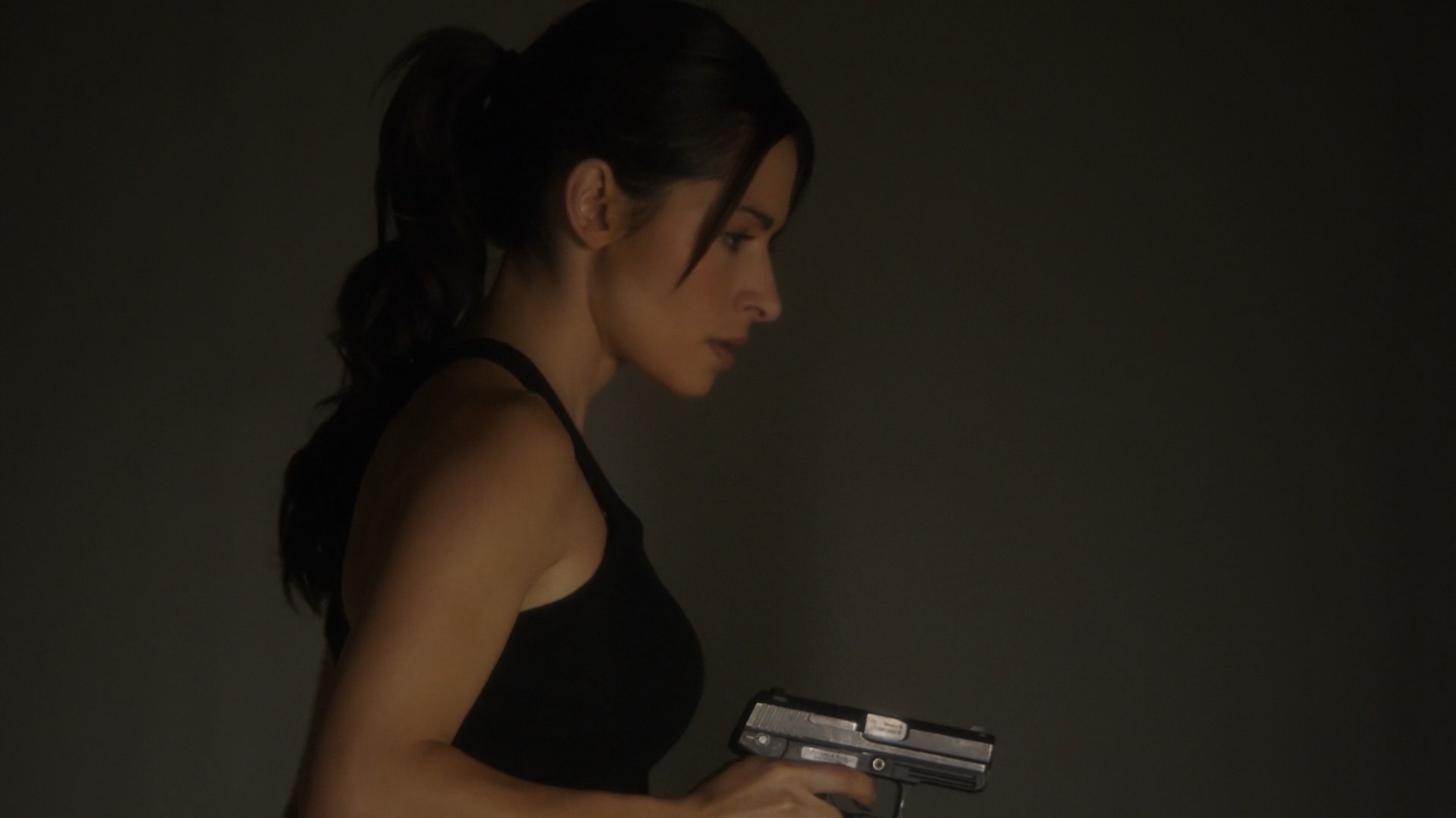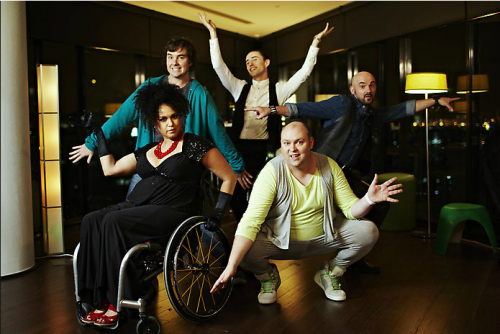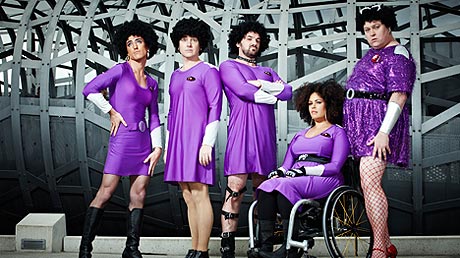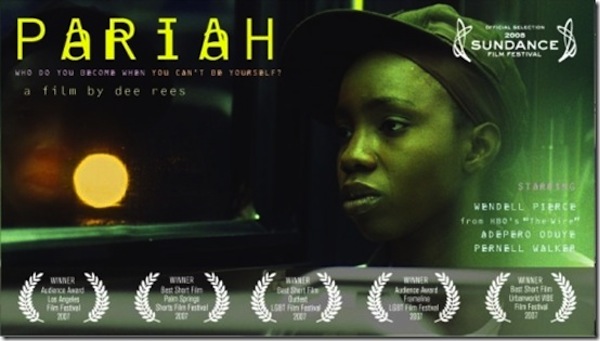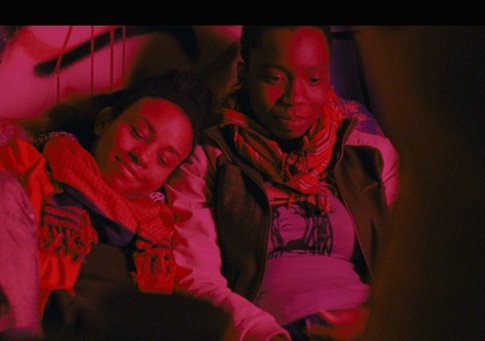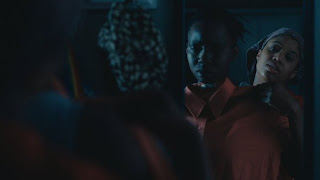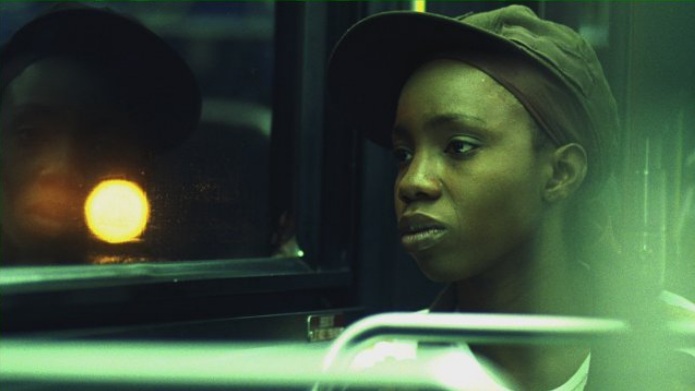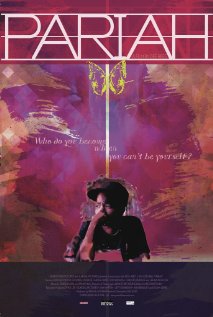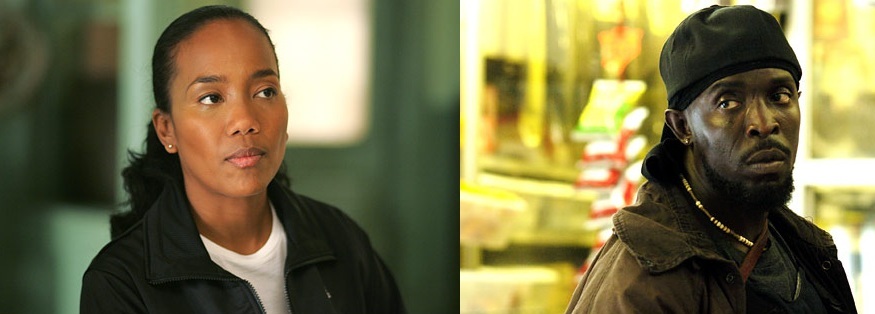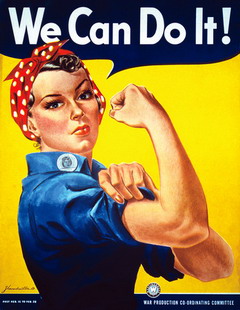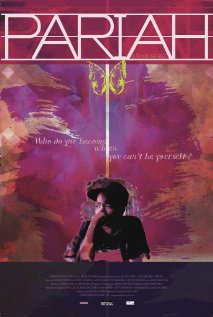This guest post written by Sophie Willard appears as part of our theme week on Bisexual Representation. | Spoilers ahead for all 5 seasons.
Bisexual people are familiar with erasure, vilification, and demonization. We live in a world where most people think Freddie Mercury was gay and Lady Gaga is straight; where Amber Heard’s bisexuality is held to blame for the abuse she suffered from her husband, Johnny Depp. There is an ever-present need for positive bisexual representation within media, be it found in film / book / television characters, pop stars, actors, writers, or other media makers. The continued scarcity of such representation only renders what is out there even more important. Every instance of bisexual representation, intentionally or not, serves to combat misconceptions and dismantle myopic attitudes towards bisexuality. Of course, not every example of bisexual representation is favorable, and certainly there exist characterizations that reinforce toxic stereotypes and a harmful misunderstanding of what it means to be bisexual.
Nonetheless, there is an increasing number of positive portrayals that we can look to for inspiration, comfort, strength, and affirmation. Sameen Shaw of the CBS television series Person of Interest is one of those portrayals. Sameen (more commonly referred to by her surname) is played by Iranian-American actress Sarah Shahi, originally familiar to many queer female fans for her recurring guest role on The L Word. Shahi herself has spoken of her pride in providing representation for lesbian and bisexual fans with her characters, and brought with her to Person of Interest an earnest maturity and an awareness of the struggles faced by members of the LGBTQ community.
Yet, interestingly, when her character was first introduced on the show, there had been no specific intention for her to be queer. Fans are more than familiar with this story, but for those unaware, it’s helpful to first know a little about the character of Shaw. A government operative when she first appears in the show’s second season, Shaw tracked down and killed terrorists. Her partner in these operations, Michael Cole, was carrying out his own off-the-books investigation into a prior mission of theirs, having reservations about the culpability of the target they had killed. When his findings suggest a government cover-up, his and Shaw’s employers decide they must be dealt with — permanently. Cole was killed but Shaw escaped, and — seeking revenge — resumes his investigation. This leads her to a chance meeting that has serious repercussions for the rest of the series. Though she thought she was meeting with Cole’s CIA contact, Veronica Sinclair, Shaw was in fact meeting with a woman who had taken Veronica hostage and interrogated her. This woman was Root (portrayed by Amy Acker), who had already been established within the show as an antagonist to the heroes. Shaw, however, was none the wiser and conversed with who she thought to be Veronica, until Root took her by surprise, tasered her, tied her to a chair, and threatened to burn her with a hot iron. Thus followed a now infamous exchange between the two women:
Shaw: One of the things I left out of my file … I kind of enjoy this sort of thing.
Root: [smiling] I am so glad you said that. I do too.
Both actresses at this point were only guest stars on the show, with the future still uncertain for Shahi’s character in particular. But the chemistry between them when filming this scene proved undeniable, and was picked up on by those writing and producing the show. Though nothing in the script or direction hinted at a sexual tension between the two characters, it nonetheless sparked in that scene, and the foundations of subtext were laid in that moment. Both actresses were subsequently promoted to series regulars, and the writing team took advantage of their chemistry to craft a relationship that forever changed both characters. It was a refreshing decision; few TV series take care to develop relationships that were not originally planned for, particularly those involving queer characters.
Nonetheless, the relationship between Shaw and Root took its time to develop, and was by no means conventional. This was a show that did not prioritize romantic sub-plots or sexual escapades. On Person of Interest, platonic friendships were always regarded with as much importance as romantic and/or sexual relationships. While series lead, John Reese (Jim Caviezel), had lost the woman he loved before the events of the show began, his new employer, Harold Finch (Michael Emerson) was still grappling with the loss of his best friend, Nathan. The way the show portrays their sense of loss and pain is equal — no more weight is given to one personal connection than the other. While over the course of the series, Reese enjoys a casual sexual relationship with a woman they sometimes enlist the help of, Zoe, their rendezvous are only ever hinted at subtextually, with not even a kiss shared between them on-screen.
With this in mind, it is even more remarkable that Root and Shaw’s relationship was allowed to flourish as it did. Certainly there was animosity between them to begin with, and Shaw was eager to exact her revenge for almost being tortured, but Root was clearly quite smitten from early on and soon began to unabashedly flirt with Shaw. For a long time, Shaw would roll her eyes and brush off Root’s advances, though her own attraction to Root could be inferred from the occasional comment. There came a point, however, when Root’s come-ons belied deeper feelings for Shaw, beyond simple attraction. Sameen Shaw, with a self-diagnosed personality disorder, experienced a limited range of emotions, and at a much lower potency than most people. As Root began to express her feelings for Shaw more frequently and honestly, Shaw recognizes that Root would have an expectation for a connection that went beyond the physical. It was something that she thought she could not offer, yet as she later learned, Root appreciates Shaw exactly for who she is.
Though Shaw is unable to express emotionally what Root means to her, she conveys enough through her actions. In the season three finale, when Root embarks on a solo mission into what was deemed the belly of the beast, Shaw cycles into the next state in the middle of a blackout to help her. “Root’s going to get herself killed,” she tells John, though when she eventually catches up with the other woman, she instead tries to suggest that she was worried about the mission more than anything else.
In the show’s fourth season, unspoken words between these two finally bubble up to the surface, and Root tries to convince Shaw that they would be perfect together. Shaw admits that she’s undeniably attracted to Root, but again brushes her off. Moments later, however, she makes the decision to sacrifice herself to save her teammates, and when Root tries to dissuade her, Shaw pulls the other woman in for a brief kiss, partly to give Root some sort of confirmation of her own feelings, partly to distract Root, and no doubt partly for herself. Though her departure from the show was for practical reasons (Shahi was pregnant with twins), Shaw remained alive and Root searched furiously for her whereabouts.
It was not until the fourth episode of the show’s fifth and final season that we were finally gifted with Shaw’s return, in an episode that proved to be not only dark, action-packed, and heart-breaking, but also conveyed to audiences that Shaw truly feels deeply about Root too, despite her inability to express as much. The entire episode places her within a virtual reality simulation crafted by the malevolent Artificial Super Intelligence that held her captive. Within the simulation, Shaw seeks comfort in small ways, despite the simulation mandate to kill her teammates and locate their base of operations. One way she comforts herself is through finding a taxi driver who’s a fellow Persian. Though Shaw’s Persian heritage had been established on the show, and she had spoken before of her mother’s immigration from Iran and early experiences in New York City, the only time that she spoke Farsi was within this simulation. This small interaction seems to speak to a subconscious desire to find something safe and familiar, while feeling an intense pressure to carry out a task she didn’t want to do.
The other way in which she sought comfort within the simulation was to have Root find and rescue her. In the simulation, Root calls her numerous pet names. Root gives Shaw her jacket when Shaw feels cold. Root takes Shaw back to her ‘apartment,’ and though none of it was real, we saw them consummate their relationship — quite explosively. Later in the episode, Shaw ends the simulation by shooting herself in the head, but not before admitting to Root that the other woman was her “safe place,” and that Shaw always thought of her whenever the psychological torture grew too difficult to bear. We learn in the episode’s closing moments, that Shaw had actually undergone 6,741 of these simulations, all with the same outcome: rather than shoot Root and betray her friends, she killed herself every time.
“It was all a dream” is an oft-ridiculed and rather dated trope in storytelling, and certainly had this episode focused on any other character, it would have been a waste of time. But with Sameen Shaw — a character who rarely emotes, who’s difficult to read, and up until this point, had not been especially clear on whether or not Root meant much to her — this episode was invaluable in opening up her mind. It allowed us to see that, yes, Shaw did reciprocate Root’s feelings, certainly just as intensely, even if they were all internalized. After nine months of capture and torture, Shaw longed to be with Root again, to feel safe in her arms.
Root and Shaw were eventually reunited, and though the reunion was sadly short-lived, Root did get a chance to open up to Shaw, and Shaw let her in. They held hands for a brief moment — no doubt the first time Sameen Shaw had ever allowed anybody to hold her hand — and Root shared that what they had between them was good enough for her, and better than anything she had ever hoped to experience in life.
Shaw had expressed physical attraction to men before on the show, and there was certainly enough subtext to suggest that she was attracted to women other than Root, but Root was the person she was tethered to, and certainly the only person we ever saw her intimately involved with. Root provided action, excitement, and unpredictability — elements that sustained Shaw. Yet, at the same time, it is important to remember that queer people are not defined solely by their relationships, and Shaw certainly has enough personality to go around. She’s often terse, frequently blunt, and exercises a moral flexibility, but she also has a strong sense of wrong and right; she is highly capable, protective, intelligent, and heroic. She ended the series as a one-woman team, accompanied solely by her dog, Bear. She is a victor, a fighter, and a survivor. She is a queer, neurodivergent, woman of color, and she was allowed to be all of these things without ever being judged or punished for them.
Though Person of Interest never used the label, and Shaw herself is not likely to ever use such labels, she is unmistakably a bisexual character, and her status as such is treated by the narrative with matter-of-factness, but also with respect and compassion. She is a source of strength for queer viewers, and a solid, positive representation of how bisexuality can be expressed by some people. Everyone wants a hero they can identify with — queer women no less — and Sameen Shaw is one of our very own.
Sophie Willard is a 20-something gal currently residing in the East of England. She has a BA in English Language with Creative Writing. You can follow her on Twitter @cake_emu where she discusses film, TV, current affairs, and more. She writes about TV and film from a queer, feminist perspective on her blog, The Television Will Be Revolutionised.
